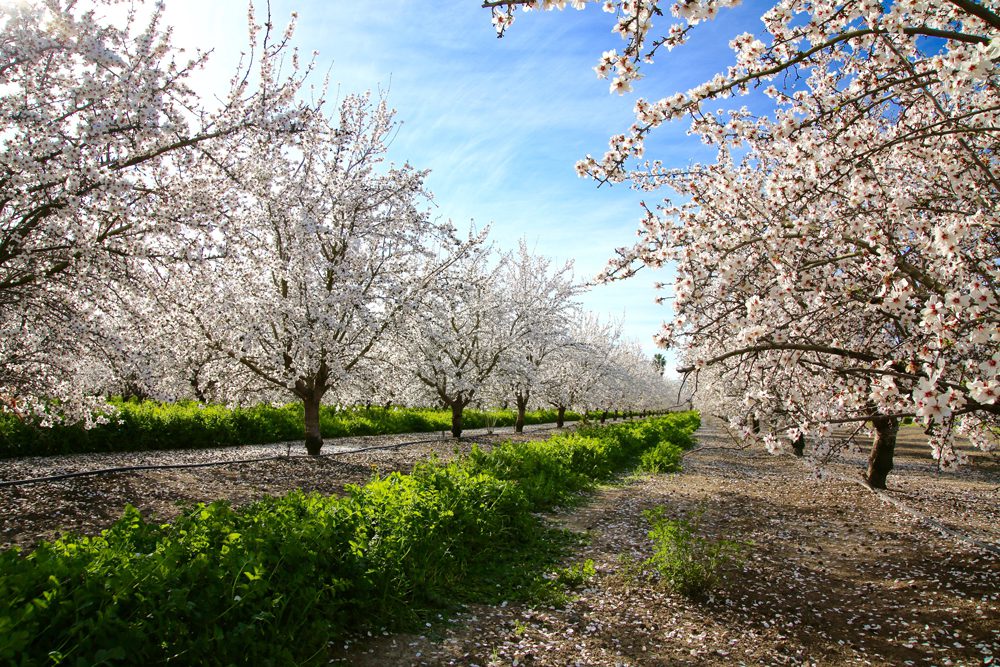
The Almond Board of California is closely following the development of European climate and sustainability proposals, which, according to sources monitoring the situation, will likely affect agricultural imports. And the industry may need to take some steps to ensure almond imports continue to flow freely into Europe.
“Almond growing here in California is incredibly efficient,” said Julie Adams, vice president of Global and Regulatory Affairs for the Almond Board of California. “Growers are looking at their resource use. They are looking at efficiencies in terms of alternate energy. It is really a matter of how do we communicate what is already being done in orchards here in California, and how do we ensure that those practices are recognized so we are getting credit for them.”
Policy proposals around sustainable production practices have been under discussion in the European Union since early 2020 under the banner of the EU Green Deal. The proposals are expected to affect both European agricultural production practices and imports.
Several ambitious targets have emerged in the proposals, including a 50% reduction in use of chemical pesticides, a 50% reduction of soil nutrient losses (while ensuring no loss of soil fertility), a reversal in the decline of pollinators and a goal that at least 25% of EU’s agricultural land be under organic production, a proposal that, if enacted, would significantly increase the existing area under organic production.
According to Kristen Sukalac, a consulting partner for Prospero and Partners, which is monitoring European policy developments for the Almond Board of California, as the EU implements these targets, “they will want to ensure that imports don’t have an unfair advantage and are subject to requirements that are consistent with domestic production.
“For example,” Sukalac said, “if a pesticide is prohibited in the EU, even if it is legally available and has gone through a risk assessment, it would also be prohibited from being present in foods that are imported into the EU. So, there will be controls at the border to make sure imports don’t have unfair advantages over EU farmers since they don’t have access to the same tools. And as the EU encourages pollinator-friendly practices, they are going to want to ensure that growers in other countries are also promoting pollinator welfare. That could come directly through conditions imposed on imports, and it could trickle down and come through the conditions that food processors and food retailers are placing on their farmers and their importers.
“It isn’t necessarily something that is going to happen at the border, per se,” she said. “But it could trickle down to suppliers and, through them, have an impact on the conditions under which the almond growers are asked to work.”
Carbon Tax
Another proposal being monitored is the implementation of a tax on agricultural imports based on the carbon footprint of a product, a tax currently in place on some industrial sector imports.
“At the moment, this is only applying to some particularly [high] emitting sectors, in part because this is a pilot and they are trying to find out how feasible this kind of offset at the border is,” Sukalac said. “[But] the European Parliament would like to see this extended to ag products without undue delay.”

In a presentation at the Almond Conference in December, Sukalac, who is based in Paris, France, pointed out that the proposals contain several ambiguities, and at a practical level, the end-product could be quite different from what is currently being aired. Also, she said, it is unlikely restrictions contained within the proposals will be imposed on almond imports anytime soon. “But,” she said, “it is important for the industry to understand the kind of political pressure that the decision makers are under from the consumer.”
As the proposals begin to roll out, potentially as soon as early 2022, Adams said the Almond Board plans to engage in public comment opportunities with fact-based information and work with European food associations to try and ensure the policies don’t adversely affect California almond imports to the EU.
“We are working closely with European associations,” Adams said. “In the same way that the U.S. industry has a far louder voice with U.S. government, so too, the European industry is able to engage more fully with their regulators. So, we want to be sure that they are aware of what the implications are through the supply chain.”
Currently, about 80% of the almonds consumed in Europe are supplied by U.S. almond growers, according to Sukalac.
Also, Adams said, the Almond Board engages regularly with U.S. government officials through the USDA Foreign Agricultural Service and other entities “to let them know where we see changes that could impact shipments of almonds.”
Among issues she expects U.S. government officials to monitor are whether European government subsidies are used to attain some of Europe’s ambitious policy objectives and whether those align with global trade rules.
“Certainly, if there are incentives for European growers that would put California’s industry at a disadvantage, that is something we would be watching for,” Adams said. She added: “Europe already has a complicated ag policy, and that is something U.S. authorities have been watching for a long time.”
The Almond Board is working to keep growers and handlers apprised of the situation, particularly with regard to potential implications on their production practices.
Sharing California’s Sustainable Story
As for future steps, Adams said it is important for growers to be aware of tools that are available for monitoring and reporting sustainable practices and to embrace the opportunities to do so.
“I think what is really essential for growers is that they continue to work closely with their handlers,” Adams said. “We also are working closely with handlers to be sure that they are sharing that information. The industry has been focusing on water-use efficiency; there is also a lot of work underway with whole orchard recycling and with various tools to monitor chemical use. We have a very extensive regulatory environment in California, too. So, how do we leverage what we are already doing to demonstrate that actually, we are already pretty far ahead on our practices compared to a number of other producers.”
Ultimately, Adams said, the policy proposals in Europe mirror a global trend of consumers wanting to know more about how their food is produced and where it originates.
“We know globally that people want to know where food comes from,” she said. “And I think California agriculture has been very aware and very proactive in being able to talk about and document how we grow.
“I would say just continuing to be able to share that information, tell that story is really essential going forward because concerns about resources, practices in the field, is only going to continue,” Adams said. “So, the more we can be part of that conversation, the better.”
Asked if she had any advice for California almond growers, Sukalac said, “I would say to an almond grower who is not participating in the various sustainability initiatives that it is really important to do so because at the end of the day, it comes down to supply chain transparency and traceability, and that trend is not going to go away.”















